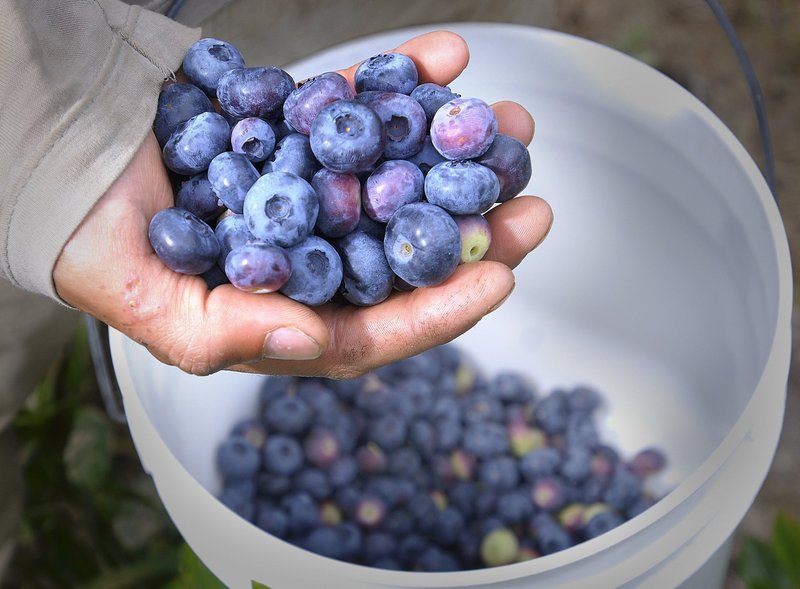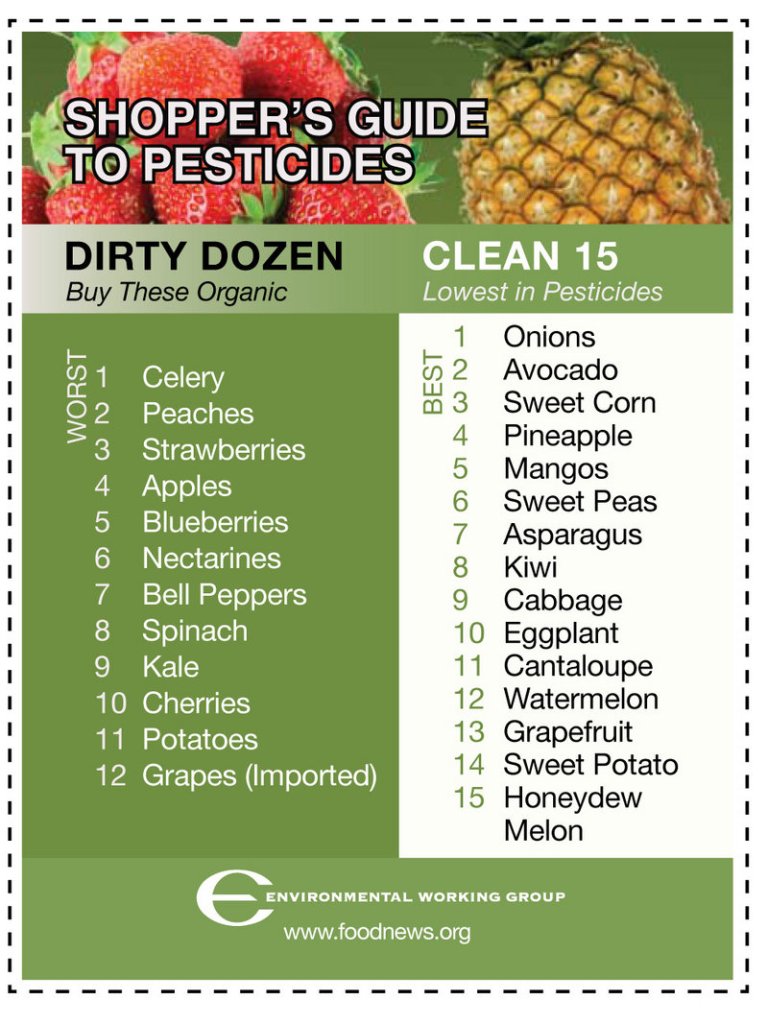This year’s Dirty Dozen list is a good tool for shoppers looking to avoid pesticides in their fruits and vegetables, but bad news for blueberries.
For the first time, the guide compiled by the Environmental Working Group includes the much-touted superfood on the list. The fruit clocks in at No. 5, ahead of nectarines and after apples.
In Maine, where native wild blueberries reign supreme over their plump, cultivated cousins, we can take some comfort from the fact that the data used to compile the list only evaluated those big berries.
The list, which is now in its sixth edition, was first produced in 1995. Using data from the U.S. Department of Agriculture and the Food and Drug Administration, the D.C.-based nonprofit creates the list by ranking the pesticide contamination found on the 50 most popular fruits and vegetables.
“We are concerned that blueberries are on the list and that wild blueberries are not differentiated from cultivated,” said Dave Bell, a spokesperson for the Wild Blueberry Commission of Maine. “We’re also concerned about the big picture. People need to be eating fruits and vegetables.”
In response, Leeann Brown, a spokesperson for the Environmental Working Group, said, “we’re not trying to undermine the need for fruits and vegetables with this list.”
Instead, the organization hopes the list will be used by shoppers who have limited funds to spend on organic produce.
“If you can’t go organic with all your purchases, (the items on the list are) where you should put your priority,” Brown said.
According to Bell, the federal government doesn’t collect pesticide residue data for wild blueberries. Bell said some of Maine’s larger growers do track this information, but it is not released to the public.
Maine’s wild blueberry industry has been investigating organic practices for years, Bell said, and recently helped fund research at the University of Maine that produced technical guidelines for organic growers.
Bell pointed out that in comparison to growers of other fruits such as apples, blueberry farmers use fewer pesticides.
“On average, our growers use two to three pesticide treatments a year,” Bell said.
However, pesticides are still very much a part of wild blueberry production in Maine. This was highlighted most recently in late 2004 and early 2005, when Maine’s two largest blueberry growers, Cherryfield Foods Inc. and Jasper Wyman & Son, agreed to halt aerial pesticide spraying after a coalition of Maine environmental groups threatened to sue the companies for violations of the federal Clean Water Act.
This change didn’t reduce or eliminate the amount of pesticides being used by these companies; it just altered the application method from aerial to ground spraying.
“The bulk of organic, wild blueberries come from Quebec,” Bell said. “It’s a very tough market for us to compete in. One of the challenges Maine has is the fruit fly maggot, which they don’t have up in Quebec.”
Despite these challenges, more Maine wild blueberry growers are opting to go organic.
The Maine Organic Farmers and Gardeners Association, the state’s organic certifying agent, reports growth in the number of farms seeking organic certification for both wild and cultivated blueberries.
“Especially in Washington County, we’re seeing more people applying for certification,” said Melissa White Pillsbury, MOFGA’s marketing coordinator.
Currently, the state has 72 certified organic growers who farm 1,600 acres of wild blueberries.
Yet this remains a small percentage of the 60,000 acres of wild blueberries grown in Maine.
Pillsbury added that the organic blueberry industry in Maine also received a boost from the recent certification of Merrill Blueberry Farms’ large-scale processing and storage facility in Ellsworth. This is the first major processing facility in Maine to gain organic certification.
“The list the EWG put out underscores the idea of knowing your farmer and talking with them about what they use,” said Pillsbury.
“If you don’t know your farmer and can’t have that conversation, that’s when certification is so important. The certification is having that conversation for you.”
Staff Writer Avery Yale Kamila can be contacted at 791-6297 or at:
akamila@pressherald.comPress Herald file
Cultivated blueberries were added to the Dirty Dozen list as one of the top fruits and vegetables harboring pesticide residues. The list advises consumers to buy organic when shopping for items on the Dirty Dozen.
Send questions/comments to the editors.



